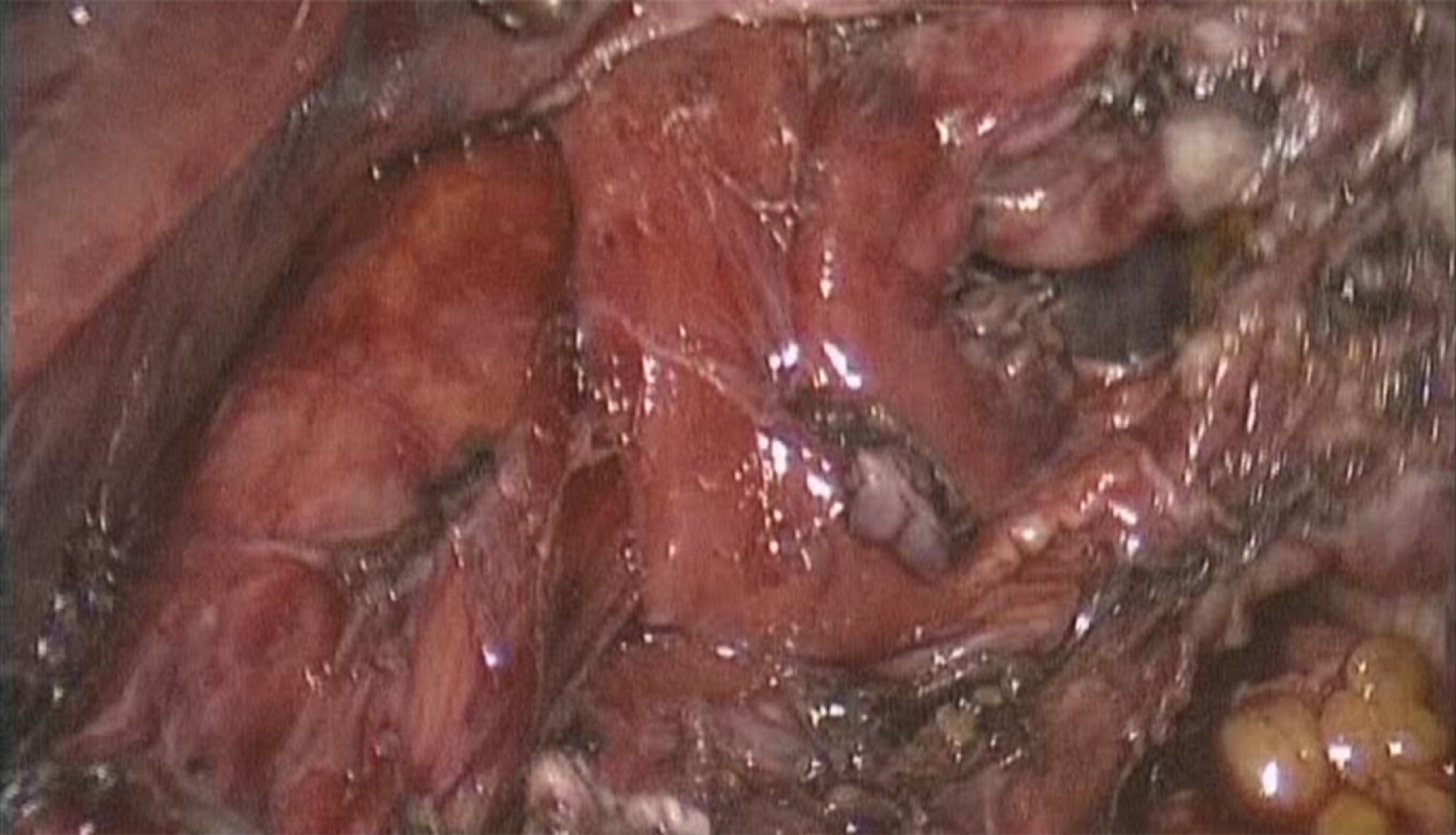Copyright
©The Author(s) 2019.
World J Clin Cases. Dec 6, 2019; 7(23): 4020-4028
Published online Dec 6, 2019. doi: 10.12998/wjcc.v7.i23.4020
Published online Dec 6, 2019. doi: 10.12998/wjcc.v7.i23.4020
Figure 1 Chest x-ray: A round–oval retrocardiac transparency can be remarked.
Figure 2 Upper digestive endoscopy in retroversion maneuver: A herniation point can be noted located near the cardia, separated by a band of tissue.
Figure 3 Barium meal: A small sliding hiatal hernia can be remarked medial and lateral to it a large sac, separated by a gap at the neck of the sac (arrows).
Figure 4 Intraoperative aspect of the diaphragmatic defect after reduction of the herniated stomach and before dissection.
The esophagus is located to the left of the photo.
Figure 5 Final intraoperative aspect after dissection.
The esophagus can be seen at the left of the image, the hiatus is slightly enlarged, the diaphragmatic defect is located lateral to the esophageal hiatus and is separated by the left crus which is anatomically intact.
- Citation: Preda SD, Pătraşcu Ș, Ungureanu BS, Cristian D, Bințințan V, Nica CM, Calu V, Strâmbu V, Sapalidis K, Șurlin VM. Primary parahiatal hernias: A case report and review of the literature. World J Clin Cases 2019; 7(23): 4020-4028
- URL: https://www.wjgnet.com/2307-8960/full/v7/i23/4020.htm
- DOI: https://dx.doi.org/10.12998/wjcc.v7.i23.4020













